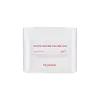What's inside
What's inside
 Key Ingredients
Key Ingredients

 Benefits
Benefits

 Concerns
Concerns

 Ingredients Side-by-side
Ingredients Side-by-side

Water
Skin Conditioning1,2-Hexanediol
Skin ConditioningGlycerin
HumectantGanoderma Lucidum Extract
Skin ProtectingSalix Alba Bark Extract
AstringentCodonopsis Lanceolata Root Extract
Skin ConditioningArctium Lappa Root Extract
Skin ConditioningChrysanthemum Sinense Flower Extract
CleansingButylene Glycol
HumectantPolyglyceryl-10 Oleate
Skin ConditioningViscum Album Leaf Extract
SoothingHamamelis Virginiana Extract
AntiseborrhoeicHydrogenated Lecithin
EmulsifyingPolyglyceryl-10 Isostearate
Skin ConditioningLavandula Angustifolia Extract
Skin ConditioningPhytosterols
Skin ConditioningEthylhexylglycerin
Skin ConditioningIllicium Verum Fruit Extract
PerfumingSodium Gluconate
Skin ConditioningLavandula Angustifolia Oil
MaskingPanthenol
Skin ConditioningScutellaria Baicalensis Root Extract
AstringentCarica Papaya Fruit Extract
Skin ConditioningSqualane
EmollientGlucose
HumectantChamomilla Recutita Flower Extract
MaskingCentella Asiatica Extract
CleansingPrunus Mume Fruit Extract
HumectantMalus Domestica Fruit Extract
AntioxidantVitis Vinifera Fruit Extract
Skin ConditioningPapain
Skin ConditioningHouttuynia Cordata Extract
Skin ConditioningChamaecyparis Obtusa Leaf Extract
Skin ConditioningOriganum Vulgare Leaf Extract
Skin ConditioningPortulaca Oleracea Extract
Skin ConditioningCinnamomum Cassia Bark Extract
MaskingLactobacillus/Soybean Ferment Extract
Skin ConditioningMadecassoside
AntioxidantCitric Acid
BufferingGardenia Florida Fruit Extract
Skin ConditioningPolygonum Cuspidatum Root Extract
AntioxidantMyrciaria Dubia Fruit Extract
Skin ConditioningTerminalia Ferdinandiana Fruit Extract
AntioxidantWater, 1,2-Hexanediol, Glycerin, Ganoderma Lucidum Extract, Salix Alba Bark Extract, Codonopsis Lanceolata Root Extract, Arctium Lappa Root Extract, Chrysanthemum Sinense Flower Extract, Butylene Glycol, Polyglyceryl-10 Oleate, Viscum Album Leaf Extract, Hamamelis Virginiana Extract, Hydrogenated Lecithin, Polyglyceryl-10 Isostearate, Lavandula Angustifolia Extract, Phytosterols, Ethylhexylglycerin, Illicium Verum Fruit Extract, Sodium Gluconate, Lavandula Angustifolia Oil, Panthenol, Scutellaria Baicalensis Root Extract, Carica Papaya Fruit Extract, Squalane, Glucose, Chamomilla Recutita Flower Extract, Centella Asiatica Extract, Prunus Mume Fruit Extract, Malus Domestica Fruit Extract, Vitis Vinifera Fruit Extract, Papain, Houttuynia Cordata Extract, Chamaecyparis Obtusa Leaf Extract, Origanum Vulgare Leaf Extract, Portulaca Oleracea Extract, Cinnamomum Cassia Bark Extract, Lactobacillus/Soybean Ferment Extract, Madecassoside, Citric Acid, Gardenia Florida Fruit Extract, Polygonum Cuspidatum Root Extract, Myrciaria Dubia Fruit Extract, Terminalia Ferdinandiana Fruit Extract
Water
Skin ConditioningDipropylene Glycol
HumectantGlycerin
HumectantButylene Glycol
Humectant1,2-Hexanediol
Skin ConditioningBetaine Salicylate
AntimicrobialBetaine
HumectantHydroxyacetophenone
AntioxidantTromethamine
BufferingOctyldodeceth-16
EmulsifyingSodium Citrate
BufferingCitric Acid
BufferingDisodium EDTA
Papain
Skin ConditioningPogostemon Cablin Leaf Oil
MaskingJuniperus Virginiana Oil
MaskingCapryloyl Salicylic Acid
ExfoliatingArtemisia Vulgaris Oil
PerfumingBeta-Glucan
Skin ConditioningMentha Arvensis Leaf Oil
MaskingWater, Dipropylene Glycol, Glycerin, Butylene Glycol, 1,2-Hexanediol, Betaine Salicylate, Betaine, Hydroxyacetophenone, Tromethamine, Octyldodeceth-16, Sodium Citrate, Citric Acid, Disodium EDTA, Papain, Pogostemon Cablin Leaf Oil, Juniperus Virginiana Oil, Capryloyl Salicylic Acid, Artemisia Vulgaris Oil, Beta-Glucan, Mentha Arvensis Leaf Oil
 Reviews
Reviews

Ingredients Explained
These ingredients are found in both products.
Ingredients higher up in an ingredient list are typically present in a larger amount.
1,2-Hexanediol is a synthetic liquid and another multi-functional powerhouse.
It is a:
- Humectant, drawing moisture into the skin
- Emollient, helping to soften skin
- Solvent, dispersing and stabilizing formulas
- Preservative booster, enhancing the antimicrobial activity of other preservatives
Butylene Glycol (or BG) is used within cosmetic products for a few different reasons:
Overall, Butylene Glycol is a safe and well-rounded ingredient that works well with other ingredients.
Though this ingredient works well with most skin types, some people with sensitive skin may experience a reaction such as allergic rashes, closed comedones, or itchiness.
Learn more about Butylene GlycolCitric Acid is an alpha hydroxy acid (AHA) naturally found in citrus fruits like oranges, lemons, and limes.
Like other AHAs, citric acid can exfoliate skin by breaking down the bonds that hold dead skin cells together. This helps reveal smoother and brighter skin underneath.
However, this exfoliating effect only happens at high concentrations (20%) which can be hard to find in cosmetic products.
Due to this, citric acid is usually included in small amounts as a pH adjuster. This helps keep products slightly more acidic and compatible with skin's natural pH.
In skincare formulas, citric acid can:
While it can provide some skin benefits, research shows lactic acid and glycolic acid are generally more effective and less irritating exfoliants.
Most citric acid used in skincare today is made by fermenting sugars (usually from molasses). This synthetic version is identical to the natural citrus form but easier to stabilize and use in formulations.
Read more about some other popular AHA's here:
Learn more about Citric AcidGlycerin is already naturally found in your skin. It helps moisturize and protect your skin.
A study from 2016 found glycerin to be more effective as a humectant than AHAs and hyaluronic acid.
As a humectant, it helps the skin stay hydrated by pulling moisture to your skin. The low molecular weight of glycerin allows it to pull moisture into the deeper layers of your skin.
Hydrated skin improves your skin barrier; Your skin barrier helps protect against irritants and bacteria.
Glycerin has also been found to have antimicrobial and antiviral properties. Due to these properties, glycerin is often used in wound and burn treatments.
In cosmetics, glycerin is usually derived from plants such as soybean or palm. However, it can also be sourced from animals, such as tallow or animal fat.
This ingredient is organic, colorless, odorless, and non-toxic.
Glycerin is the name for this ingredient in American English. British English uses Glycerol/Glycerine.
Learn more about GlycerinPapain is an enzyme found naturally in the papaya plant's leaves, fruit, and roots. It has antimicrobial, soothing, and wound healing properties.
Glycine and Vitamin A are naturally found in papain.
While papain is often touted as skin-lightening, further studies are needed to prove this. However, papain has been shown to help soothe acne-inflammation.
Papain belongs to a class of enzymes called proteolytic enzymes. These enzymes break down peptides and amino acids.
Some studies found papain to be a potential skin sensitizer and allergen. Those with latex allergies might also be allergic to papaya.
Learn more about PapainWater. It's the most common cosmetic ingredient of all. You'll usually see it at the top of ingredient lists, meaning that it makes up the largest part of the product.
So why is it so popular? Water most often acts as a solvent - this means that it helps dissolve other ingredients into the formulation.
You'll also recognize water as that liquid we all need to stay alive. If you see this, drink a glass of water. Stay hydrated!
Learn more about Water